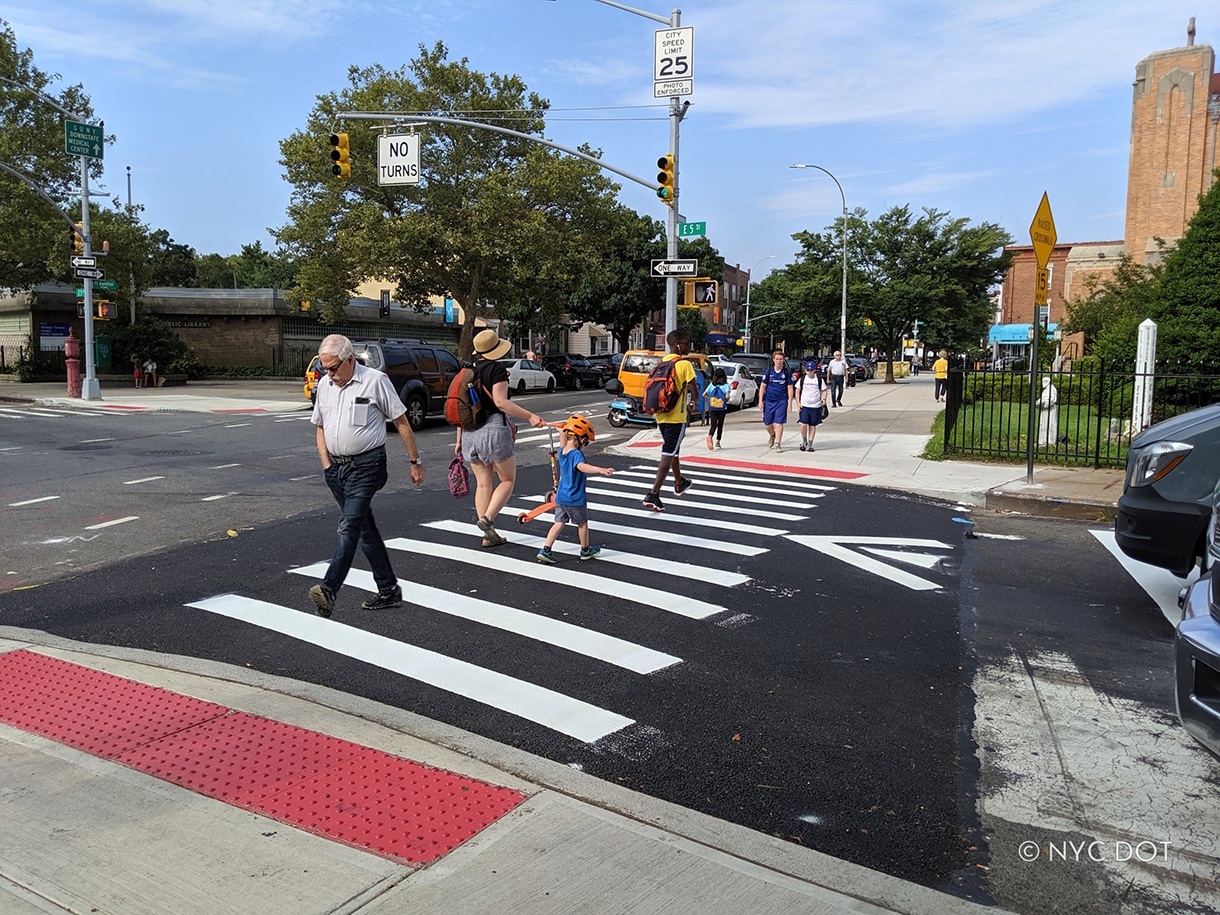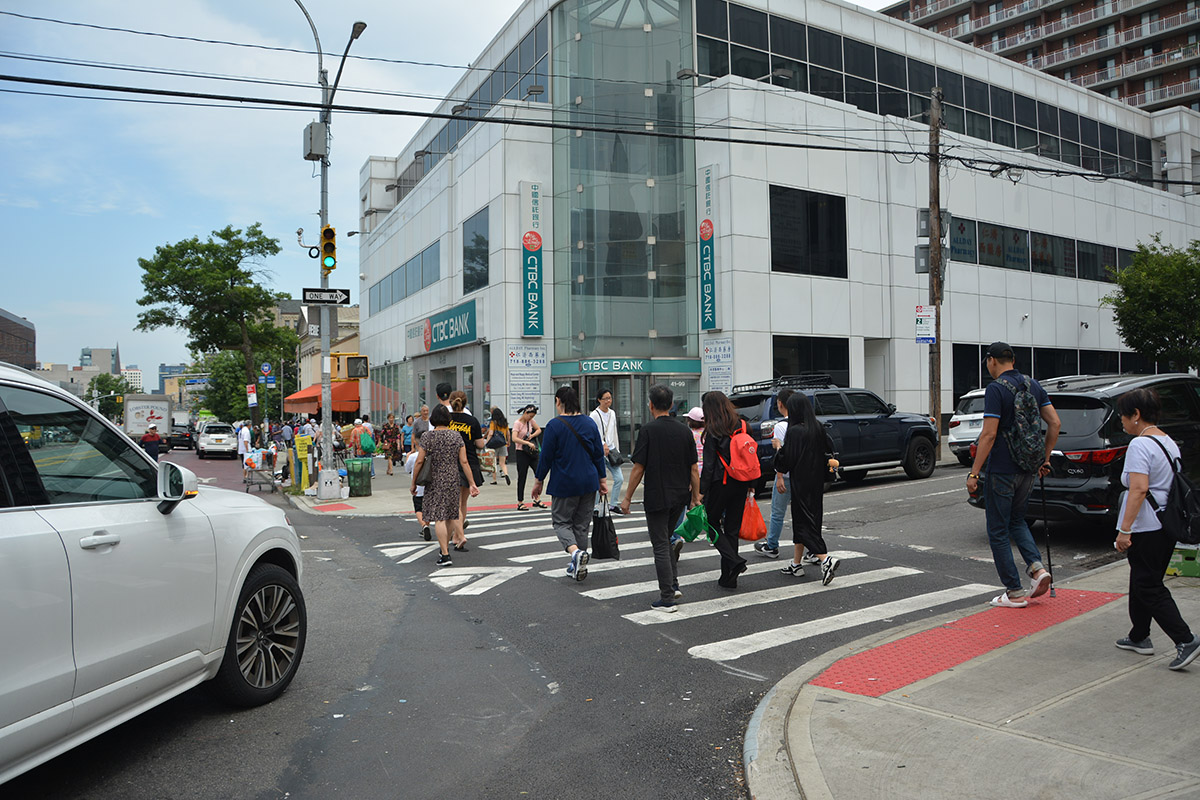Usage: Standard
Raised Crosswalks that are built with NYC DOT in-house crews are constructed entirely out of asphalt. Raised Crosswalks that are constructed as part of capital projects, have a concrete base, and a minimum of 3 inches of asphalt on top. Both are marked with thermoplastic symbols applied to communicate to pedestrians and road users.

E 5th Street and Ft. Hamilton Parkway, Brooklyn

Main Street and Maple Avenue, Queens
Benefits
- Encourages slower vehicle speeds
- Increases pedestrian visibility at intersections
- Creates accessible, smooth crossing surface
Considerations
- Raised Crosswalks that are constructed entirely of concrete have been piloted in New York City, however due to maintenance challenges – such as difficulty maintaining thermoplastic markings and maintaining proper drainage– this material is discouraged
- Not appropriate for designated truck routes, MTA bus routes, streets with more than one moving lane per direction
- May impact street drainage or require catch basin relocation
- May impact utility manholes
Application
See Geometry: Raised Crosswalk and Raised Speed Reducer for application guidance on when to use raised crosswalks
Design
Specification source: DOT Standard Specifications Sections
See Raised Crosswalk in Geometry
- Concrete base ranging from 6 to 10-inches with a 3-inch asphalt overlay
- Appropriate warning signs and roadway markings should accompany Raised Crosswalk
- Detectable warning strips must be provided at crosswalk location; See Detectable Warning Surface for additional guidance
- Utilize recycled content in paving materials
Maintenance
DOT maintains this treatment

